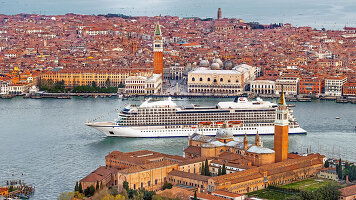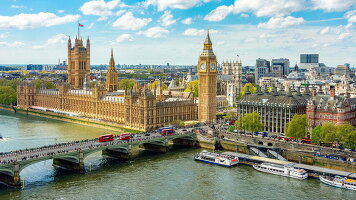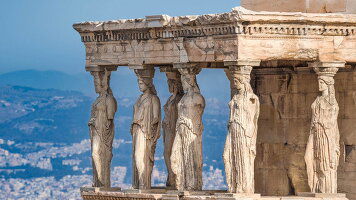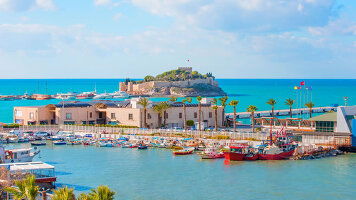Overview
Itinerary
Chioggia is a charming fishing community located at the southern end of the Venetian Lagoon and steeped in age-old seafaring traditions. Its combination of canals, bridges and fishing boats have lent it the nickname “Little Venice.” Lined with shops, bars and restaurants, the main pedestrian street of Corso del Popolo exudes a lively atmosphere amid the aroma of delicious fresh seafood dishes. Chioggia shares a long history of cultural and economic ties with Venice, dating back to the Middle Ages, and is a scenic journey by water taxi from the capital of the Veneto region.
The Venetian Republic ruled Adriatic waves for a millennium. During the 8th century as the Roman Empire began to decline, many Europeans fled to Venice and its neighboring towns, including Chioggia. Merchants put their skills to use, and the city-state was soon thriving. The Venetian Lagoon's canal banks feature buildings influenced by Byzantine and Islamic architecture, reflecting Venice's powerful trading network. The first vaporetto traversed the Grand Canal in 1881; alongside the gondolas, these iconic Venetian water buses are at the heart of Venice's transport network.
Šibenik is the oldest Croatian city on the Dalmatian Coast. The remarkable architecture of this UNESCO World Heritage Site spans the centuries, having witnessed the rise and fall of empires, from Byzantine to Venetian. In its remarkably preserved Old Town, narrow cobblestone streets lead past medieval houses and churches, all surrounded by four historic fortresses, including the imposing St. Nicholas Fortress. St. James Cathedral, built by several architects in the Gothic and Renaissance styles over a century, is the most important Renaissance structure in Croatia.
Located at the heel of Italy's boot, Bari boasts a sunny, palm-lined promenade, romantic honey-toned balconied houses, welcoming courtyards, and Romanesque and baroque churches. It is pure pleasure to take in the distinct Mediterranean atmosphere of this picturesque port, with colorful fishing boats bobbing on the turquoise harbor. History and culture take center stage at the splendid Norman-Swabian Castle; the Romanesque Basilica of St. Nicholas, named for the city's patron saint; and the Petruzzelli Theater, one of Italy's most important opera houses.
Crotone, according to Ovid, was named by Hercules himself in memory of a friend he had accidentally slain. Today, it is the capital of its eponymous province, a region known for its pristine waters, untouched mountains and vast forests. As the gateway to a landscape bestowed with great natural beauty, Crotone prides itself in its deep historical roots, which can be traced back to the 7th century BC in the city's archaeological museum and the ruins of two redoubtable fortifications, the Castle of St. Charles V and Le Castella, situated on a small peninsula south of the city.
Sicily has been shaped by countless civilizations, from Greek to Byzantine to Roman. When it fell under Spain's purview in the 17th century, it was celebrated as one of Europe's ten great cities. Surrounded by undulating mountains, orange and olive groves and vineyards are plentiful. During World War II, Messina was the destination of the unofficial “Race to Messina” between US General Patton and British Field Marshall Montgomery. In the end, Patton arrived just hours before his British comrade, receiving credit for securing Sicily.
Naples boasts a long history in a stunning seaside setting and has long been a major center of Italian culture. The city was the seat of a powerful independent kingdom for 500 years. So great was its sway that it lured the region's finest architects and artists. In the grand Piazza del Plebiscito, the grand and sweeping public square, the San Francesco di Paola Church flaunts a colonnaded facade reminiscent of the Pantheon in Rome, and the Royal Palace overlooks Neapolitans with statues of all the kings of Naples peering out from alcoves.
For centuries, Rome ruled much of Europe, building a vast empire from the power of emperors. More than 2,500 years of history live in the city's streets. Ancient structures recall those heady days when the cheers of 80,000 spectators roared from the Colosseum, citizens mingled in the Forum and senators asked the gods for guidance at the Pantheon. Along with the Vatican and St. Peter's Basilica, this rich pocket of Italy is one of the world's greatest repositories of history and civilization.
Tuscany is known equally as the cradle of the Renaissance and a center of culinary delights and astounding wines. Throughout this emerald-green countryside dotted with cypress trees, endless delights unfold. Among them is Florence, a living museum of the Renaissance. Brunelleschi's famous Duomo dominates the medieval cityscape—an architectural achievement. Another Tuscan treasure, the Square of Miracles, unfolds in Pisa. Here, a trinity of masterpieces—the Leaning Tower, Pisa Cathedral and Baptistery—comprise some of Europe's finest art and architecture.
Tuscany is known for its scenic beauty and exudes a unique, rustic character. Vineyards, olive tree groves, wheat fields and endless expanses of farmland skirt the bases of medieval hill towns as they march across an undulating landscape of gentle hills. Fertile soils produce some of the world's finest wines, including Chianti and Vino Nobile di Montepulciano. More than this, many consider Tuscany the birthplace of the original farm-to-table movement. Simple, honest food graces the Tuscan table, from creamy cheeses to thick Florentine steak grilled over a wood fire.
The chic city of Monte Carlo in the petite kingdom of Monaco boasts some of the world's most exclusive shopping and a beautiful old port. A fairy-tale aura has settled on this glittering city of the Grimaldi family, perhaps nowhere more elegantly than at the Prince's Palace, where the late American actress-turned-princess Grace Kelly presided with Prince Rainier III. Monte Carlo's medieval quarter perches on “The Rock,” an escarpment at the foot of the Maritime Alps, and offers spectacular views of the Mediterranean and the harbor lined with mega-yachts.
Marseille is rich in historic treasures, nestled between the Mediterranean and rocky hills of limestone. Two 17th-century fortresses dominate the charming Vieux Port, or Old Port, the natural harbor that hosts all manner of watercraft, from sleek elegant yachts to old style fishing vessels. Its picturesque quay is one of the world's most romantic walks, lined with dozens of cafés and shops. Also worth exploring is the city center, graced by La Canebière boulevard. Linger in a café and sample the city's signature bouillabaisse made from freshly caught fish.
In a picturesque setting on France's southern coast, Sète is renowned for its vibrant atmosphere and cultural charm. Known as the “Venice of Languedoc,” its network of canals offer an alluring ambience, with boats bobbing in the water and colorful buildings lining the banks. Due to its booming fishing industry, Sète features an array of delicious seafood, centered around the town's bustling fish market, Les Halles de Sète. The best way to explore is on foot or by bicycle, where you can while away the time along the canals that link the Mediterranean to the Thau Lagoon.
The vibrant city of Barcelona, with its lively culture and inviting outdoor spaces, preserves a rich history. Picturesque medieval lanes wind through the oldest part of the city, the Gothic Quarter, where remnants of the city's Roman wall were uncovered. Its treasures include the neo-Gothic Barcelona Cathedral, the medieval Jewish district of El Call and the Romanesque Church of Santa Maria del Pi. In the evenings, diners relax in the Royal Plaza at restaurants along the elegant square's perimeter.
Barcelona is steeped in history, with stunning architecture and a rich culture. Mediterranean breezes grace the shore and Catalonia's capital is a feast for the senses. Long strolls on wide boulevards—such as Las Ramblas, the mile-long leafy pedestrian way, and the Passeig de Gràcia, lined with some of Europe's most elegant buildings—set the tone for a city that moves to its own tempo. Native son and famed architect Antoni Gaudí adorned his city with whimsy, whether along fantastical city blocks or with his colossal masterpiece, the towering La Sagrada Família cathedral.
Visitors flock to this spectacular haven for sun, relaxation and Mediterranean breezes. Remnants of past civilizations abound: the massive La Seu Cathedral in Palma was built over a mosque, and the Almudaina Palace was originally constructed as an Arabian fort. The picturesque village of Valldemossa invites long strolls and samplings of the island's jellied breadsticks. Here, at the foot of forested mountains, a Carthusian monastery housed devout monks for 436 years. Composer Frédéric Chopin spent the winter of 1838 writing some of his best work in this tranquil setting.
The charms of Murcia lie in its embrace of its rural pleasures. Surrounded by farmland and fertile huertas , Murcianos are never at a loss for produce freshly plucked from “Europe's orchard.” They, in turn, live by the patient cycle of the harvest, going about their days at a leisurely pace. The Moors founded the city in 825 and introduced a vast irrigation network for crops and for city use. They were expelled by Ferdinand III of Castile in 1243. Murcia province remained a vassal kingdom until 1812 and became an autonomous region of Spain in 1982.
Granada is a splendid canvas of Moorish architecture, rich Andalusian tradition and remarkable history. It was the last stronghold of the Moorish Nasrid dynasty, whose 250-year reign ended during the 1492 reconquest of Spain by Catholic monarchs. The grand Granada Cathedral is a soaring celebration of that victory; its Royal Chapel holds the tombs of Queen Isabel and King Ferdinand, the celebrated pair who oversaw the triumph. Their magnificent fortress-palace, the Alhambra, was long the stronghold of Moors, and so offers a magnificent blend of Islamic and Christian detail.
A pivotal port city linking Africa and Europe, Tangier lies just nineteen miles across the Strait of Gibraltar from the Iberian Peninsula. Long coveted for its strategic location where the Atlantic and Mediterranean meet, numerous empires called it their own throughout history. The city's vibrancy and multicultural air attracted all manner of artists in the late 20th century, including Henri Matisse and Paul Bowles. Tangier's ancient, walled medina brims with the pleasures of Morocco, from intricate carpets and finely made slippers to fresh dates.
Cádiz lies on Spain's breathtaking province of Andalusia and gained incredible wealth during the 18th century; riches from the Americas were unloaded here after the Guadalquivir River to Seville silted up. This scenic southern region is home the matador and world-class equestrian art. Seville, city of polyamorous suitor Don Juan, boasts plenty of its own glories. Its grand cathedral, Alcázar Palace and Tower of Gold were built from the coffers of Spanish kings, but its fiery flamenco defines its true spirit. It is best to ponder it all while sipping sherry at a bodega.
Lisbon has inspired explorers for centuries with its stunning setting at the Tagus River's mouth. Its labyrinthine streets carry echoes of 16th-century navigators who sailed on the winds of the Age of Discovery. The city prospered greatly from its trade. And today's streets are lined with the legacies of wealthy builders, including the Jerónimos Monastery and Belém Tower, stunning works that introduced Manueline architecture. Savoring local cuisine and port wine are favorite pastimes here. On any evening, the strains of fado spill from clubs in the historic Alfama District.
Bid farewell to your fellow guests and journey home. Or spend more time exploring, perhaps joining one of our extensions.
Life Onboard Viking Jupiter
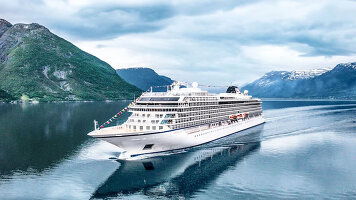
Launched in 2019, the Viking Jupiter is Vikings' newest all-veranda ship, part of a fleet of award winning, state of the art ships incorporating all the comforts & luxuries you would expect from Viking. Read more
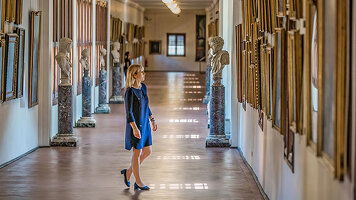
Viking are destination experts. With no casinos or children on board, you can be assured that the focus is firmly on enrichment and education. Read more
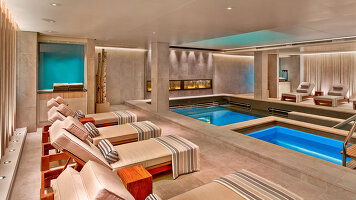
After a day of exploration or just to enhance the relaxation of a day at sea, the on-board Spa will leave you feeling recharged and revitalized. Read more
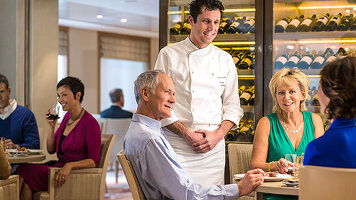
Viking offer eight on board dining options. Beer, wine and soft drinks are available with lunch and dinner at no additional charge of fee. Read more
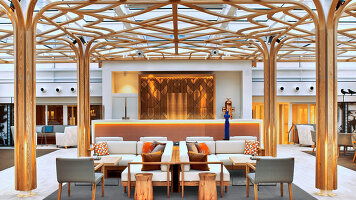
Viking proudly includes all that you need and nothing you do not. A variety of features and services valued at $200 per person per day are standard inclusions in your cruise. Read more
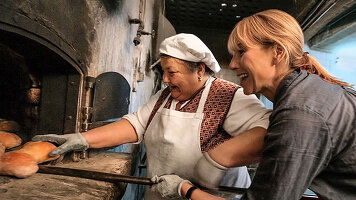
Viking include one complimentary shore excursion in every port of call. Enjoy exclusive entry to cultural treasures and seldom-seen collections around the world. Read more

Brochure
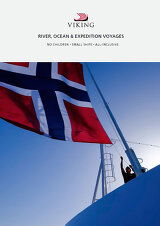
Viking River, Ocean & Expedition Voyages (2025-27)
Dates & Pricing
 USD
USD
Viking Cruise $25 Deposits!
Cabin Layout Options:
Select Cabin Preference:
Tour & cruises prices are per person. Prices shown have savings applied, are subject to availability and may be withdrawn at any time without notice. Pricing and trip details are correct at this point in time, however are subject to confirmation at the time of booking and are subject to change by Viking. For cruise itineraries, cabin images are sourced from the cruise-line and should be treated as indicative only. Cabin inclusions, upholsteries and room layout may differ to the image(s) shown depending on the ship selected and your sailing dates.





